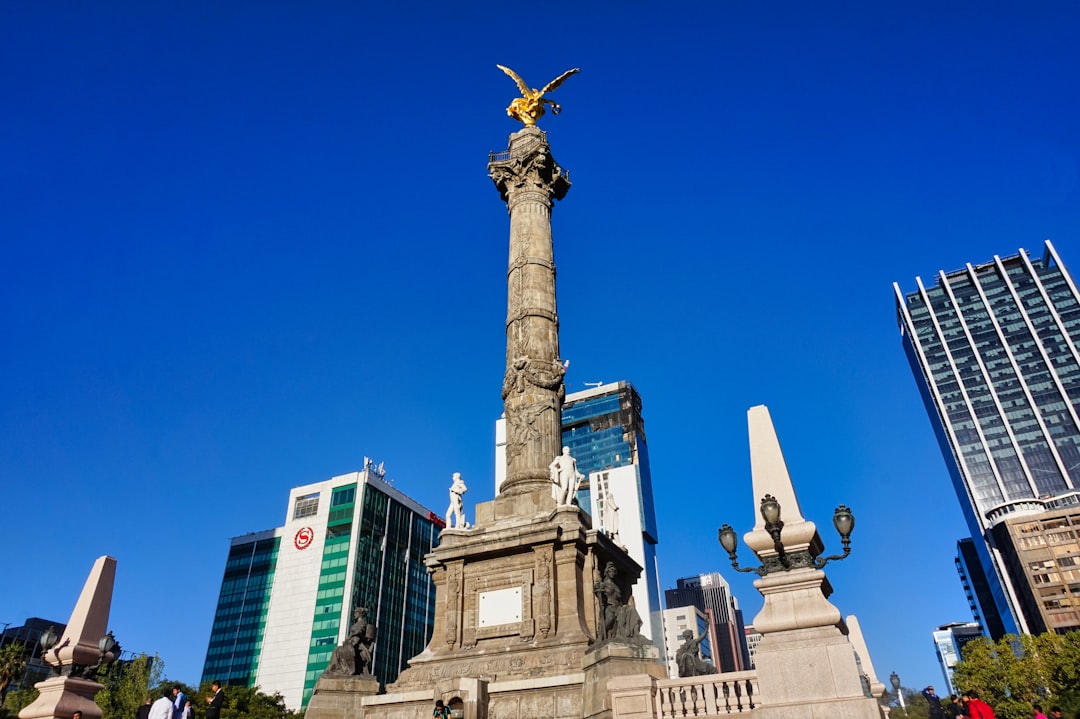The Complete Toolkit for Seamless Nomad Transitions

Introduction
Living a location‑independent lifestyle is a dream for many, but the reality of moving from one country to another can feel chaotic without the right preparation. The difference between a smooth transition and a stressful scramble often comes down to one thing: a well‑thought‑out toolkit. This guide gathers every essential element you need to transition seamlessly between homes, visas, workspaces, and cultures. Whether you are a first‑time digital nomad or a seasoned traveler looking to tighten up your process, the following sections will help you build a personal “Nomad Transition Kit” that covers packing, paperwork, finances, health, connectivity, and community.
Why a Toolkit Matters
A nomadic lifestyle is built on flexibility, yet flexibility does not mean improvisation. When you have a reliable set of tools and resources at your fingertips, you gain:
- Predictability – Knowing exactly what to do before, during, and after a move reduces anxiety.
- Efficiency – Streamlined processes free up time for work, exploration, and learning.
- Safety – Proper documentation and health preparations protect you from legal and medical setbacks.
- Cost Savings – Organized finances and smart packing prevent unnecessary expenses.
Think of the toolkit as a modular system. Each component can be customized to fit the length of your stay, the climate of your destination, and the nature of your work. The sections below break down the toolkit into actionable pieces you can assemble step by step.
Core Components of the Toolkit
Below is a high‑level view of the nine pillars that make up a complete nomad transition system.
- Packing Fundamentals – How to choose, organize, and transport your belongings.
- Legal Documentation – Visas, work permits, travel insurance, and identification.
- Digital Organization – Cloud storage, password managers, and device backups.
- Health & Safety – Vaccinations, medical records, and emergency plans.
- Financial Tools – Banking, budgeting, and tax considerations.
- Connectivity – Internet access, communication apps, and SIM management.
- Community & Support – Local networks, co‑working spaces, and online groups.
- Transition Checklist – A step‑by‑step timeline for each move.
- Resources & Apps – Recommended products, services, and platforms.
Each pillar is explored in depth below, with practical tips, checklists, and recommended resources.
Packing Fundamentals
Define Your Packing Philosophy
Two popular approaches dominate nomad packing: minimalist and purpose‑driven. Minimalism focuses on carrying as little as possible, often under a 10‑kilogram limit. Purpose‑driven packing allows a slightly larger load if your destination demands specific gear (e.g., hiking equipment, cold‑weather clothing). Decide early which philosophy aligns with your travel style, then build your packing system around it.
Choose the Right Luggage
| Type | Best For | Key Features |
|---|---|---|
| Backpack (40‑60 L) | Long‑term travel, backpacking, frequent moves | Compression straps, rain cover, internal frames |
| Carry‑on suitcase | Business trips, frequent flights, urban stays | Hard shell, spinner wheels, TSA lock |
| Duffel bag with wheels | Bulkier items, occasional longer stays | Expandable, detachable shoulder strap |
| Packing cubes | Organization within any bag | Different sizes, breathable mesh, zip closure |
Invest in high‑quality, durable gear. A well‑made backpack can last years and protect your belongings from rough handling.
Build a Modular Packing List
Start with a core capsule that travels with you everywhere:
- Clothing – 2‑3 shirts, 2 pairs of pants/shorts, 1 sweater, 5‑7 pairs of underwear, 5 pairs of socks, 1 lightweight rain jacket, 1 pair of comfortable shoes, flip‑flops.
- Tech – Laptop, charger, universal power adapter, phone, headphones, portable SSD, USB‑C hub.
- Essentials – Passport, travel insurance card, reusable water bottle, basic first‑aid kit, multi‑tool, travel pillow.
From this base, add destination‑specific items:
- Cold climate: thermal base layers, insulated jacket, gloves, beanie.
- Warm climate: breathable shirts, hat, sunscreen, mosquito net.
- Outdoor focus: trekking boots, crampons, waterproof pants.
Packing Techniques
- Roll, don’t fold – Rolling reduces wrinkles and maximizes space.
- Use compression bags – For bulky items like jackets; keep the bag partially open for ventilation.
- Layer heavy items at the bottom – Place shoes and electronics near the center of gravity for balance.
- Fill gaps with socks and underwear – Small items act as padding and prevent shifting.
The 48‑Hour Pre‑Departure Pack
- Empty all trash and perishable food from your bag.
- Double‑check that liquids are within airline limits (≤100 ml each, in a clear zip‑lock bag).
- Run a quick inventory against your master packing list.
- Charge all devices to at least 80 % capacity.
- Place a printed copy of your travel itinerary and emergency contacts in an external pocket.
Legal Documentation
Visa and Work Permit Strategies
Research the visa requirements of your destination at least two months before departure. Some countries offer digital nomad visas that allow stays of 6‑12 months for remote workers. Others may require a tourist visa that can be extended locally.
- Short‑term stays (≤90 days) – Tourist visa, often visa‑free for many passports.
- Medium‑term stays (3‑6 months) – Tourist visa with extension, working holiday visa, or remote‑work visa.
- Long‑term stays (>6 months) – Temporary residence permit, freelancer visa, or investor visa.
Create a Visa Tracker Spreadsheet with columns for: country, visa type, required documents, application fee, processing time, expiry date, renewal steps. Keep a copy of the spreadsheet in a cloud folder that you can access anywhere.
Essential Documents to Keep Digitally and Physically
- Passport – Scan the identification page and keep a PDF in encrypted cloud storage.
- Visa pages – Scan each visa stamp or approval letter.
- International Driving Permit (IDP) – If you plan to drive, keep a scanned copy.
- Birth certificate and marriage certificate – Useful for certain visa applications.
- Travel insurance policy – Include policy number, emergency hotline, and coverage details.
Store physical copies in a water‑proof document organizer that fits inside your main bag.
Travel Insurance Essentials
Choose a policy that covers:
- Medical emergencies and evacuation
- Trip cancellation and interruption
- Lost or stolen belongings
- Personal liability
Popular providers for digital nomads include World Nomads, SafetyWing, and IMG Global. Compare coverage limits, deductibles, and the ability to claim online.
Emergency Documents
- Consular contact list – Include the phone number and address of your home country’s embassy or consulate in the destination.
- Local emergency numbers – 112 works across most of Europe, but know the specific number for police, fire, and ambulance in each country.
Print a one‑page emergency sheet and keep it in an external pocket of your bag.
Digital Organization
Cloud Storage Strategy
Select two cloud services for redundancy. A common pairing is Google Drive (15 GB free, seamless integration with Android) and Dropbox (2 GB free, strong desktop client).
-
Primary folder structure:
Travel Documents– PDFs of passports, visas, insurance, medical records.Finances– Bank statements, tax documents, budgeting spreadsheets.Work– Project files, client contracts, invoices.Photos– Travel photos organized by year and location.
Enable two‑factor authentication on every account. Use a password manager (e.g., Bitwarden, LastPass) to generate and store complex passwords.
Device Backup Routine
- Laptop – Schedule a weekly backup to an external SSD and a cloud folder.
- Phone – Use native iCloud (iOS) or Google Backup (Android) for contacts, photos, and app data.
- Tablet/E‑reader – Sync notes and e‑books to a cloud service.
Test restore procedures before a major move to ensure data integrity.
Password Management
A password manager eliminates the need to remember dozens of logins. Store:
- Email accounts (primary, secondary)
- Banking and payment platforms (Revolut, Wise, PayPal)
- Subscription services (VPN, cloud storage, software)
- Social media and community platforms
Enable the manager’s built‑in password generator to create unique, strong passwords for each site.
Offline Access
Download essential files for offline use, especially when traveling to regions with limited connectivity. Typical offline resources:
- Local maps (Google Maps offline packs)
- Important PDFs (visa pages, insurance policy)
- Work documents needed for upcoming deadlines
Health & Safety
Vaccination and Health Checks
Consult a travel health clinic six to eight weeks before departure. Common vaccinations for long‑term travelers include:
- Hepatitis A and B
- Typhoid
- Tetanus‑diphtheria (Tdap)
- Rabies (if working with animals)
Ask for an International Certificate of Vaccination (the “yellow card”) and scan it for your digital records.
Medical Supplies
A compact first‑aid kit should contain:
- Adhesive bandages (various sizes)
- Antiseptic wipes
- Pain relievers (ibuprofen, acetaminophen)
- Anti‑diarrheal medication (loperamide)
- Personal prescription meds (enough for at least three months)
- Allergy medication (antihistamines, epinephrine auto‑injector if needed)
Keep prescriptions in their original packaging with a copy of the doctor’s note.
Health Insurance Portability
If you have a national health plan, verify whether it provides coverage abroad. Many countries require a supplemental private plan for non‑emergency care.
Emergency Action Plan
- Identify the nearest hospital or clinic in your destination.
- Store the address and phone number in your phone contacts under “Emergency – Hospital.”
- Inform a trusted friend or family member of your location and health status.
- Keep a small cash reserve (≈USD 50) for emergencies where cards may not work.
Financial Tools
Banking on the Move
Traditional banks can be cumbersome for nomads due to high foreign‑transaction fees and limited branch access. Consider a hybrid approach:
- Local bank account – Open a checking account in your host country for local transactions and to avoid ATM fees.
- International digital bank – Services like Revolut, Wise, and N26 offer multi‑currency accounts, low‑fee transfers, and virtual cards.
Maintain a primary currency wallet (e.g., USD) and a local currency wallet for everyday expenses.
Budgeting and Expense Tracking
Use a budgeting app that syncs across devices, such as YNAB (You Need A Budget) or Mint. Set up categories that reflect nomadic life:
- Accommodation (short‑term rentals, co‑living)
- Transportation (flights, trains, local transit)
- Food (groceries, dining out)
- Work‑related costs (co‑working space, software subscriptions)
- Insurance and healthcare
- Leisure and experiences
Review your budget weekly to adjust spending patterns.
Tax Considerations
Digital nomads often face complex tax obligations. Key steps:
- Determine your tax residency – Most countries consider you a tax resident if you spend >183 days per year there.
- Check for tax treaties between your home country and the host nation to avoid double taxation.
- Keep detailed records of income, expenses, and travel dates.
- Consult a tax professional familiar with international remote work.
Payment Methods
- Virtual cards – Useful for online subscriptions, especially when a physical card is not accepted.
- Cash‑free solutions – Use QR‑code payment platforms popular in the region (Alipay, Paytm, etc.) when traveling in Asia.
- Cryptocurrency – Some nomads keep a small portion of savings in Bitcoin or stablecoins for quick cross‑border transfers, but be aware of local regulations.
Connectivity
Choosing an Internet Solution
Reliable internet is the lifeline of remote work. Evaluate three main options:
- Local SIM card – Purchase a prepaid data plan upon arrival. Look for carriers with 4G/LTE coverage in your city.
- International SIM – Providers like OneSimCard or GigSky offer global data plans, ideal for short stays in multiple countries.
- Mobile hotspot – A portable Wi‑Fi router with a SIM slot can share a single data plan across multiple devices.
Test speed with a free app like Speedtest before committing to a plan.
VPN and Security
Public Wi‑Fi is common in cafés and co‑working spaces, but it can expose your data. Install a reputable VPN (e.g., NordVPN, ExpressVPN, Surfshark) on all devices. Choose a server location that offers fast speeds and complies with local regulations.
Communication Tools
- Video conferencing – Zoom, Microsoft Teams, and Google Meet are industry standards.
- Instant messaging – Slack for work channels, WhatsApp or Signal for personal contacts.
- Voice calls – Use apps that support low‑cost international calling (e.g., Google Voice, Rebtel).
Set up a dedicated work profile on your phone to separate personal and professional communications.
Community & Support
Finding Local Communities
- Co‑working spaces – Many cities have hubs like WeWork, Impact Hub, or local independent spaces that host events and networking.
- Meetup groups – Search for “digital nomad,” “expat,” or “remote work” groups on Meetup.com.
- Facebook groups – Look for location‑specific nomad communities (e.g., “Digital Nomads in Berlin”).
Attend at least one local event within the first week to build a support network.
Online Nomad Platforms
- Nomad List – City rankings, cost‑of‑living data, and a forum for travelers.
- Remote OK – Job board for remote positions.
- Slack communities – Channels like “Nomad Slack” and “Remote Work Tribe” provide daily interaction.
Mentorship and Knowledge Sharing
Reach out to seasoned nomads for advice on visas, housing, or local customs. Offer your own expertise in exchange; a two‑way mentorship creates lasting relationships.
Transition Checklist
Below is a timeline that you can adapt for each move. Adjust the dates based on your travel schedule and visa requirements.
Two months before departure
- Research visa requirements and start the application.
- Book one‑way flight or flexible ticket.
- Notify your bank of upcoming travel to avoid card blocks.
- Order any needed gear (backpack, packing cubes, travel adapters).
One month before departure
- Schedule a health check and vaccinations.
- Purchase travel insurance and download the policy PDF.
- Create a master packing list and start downsizing belongings.
- Back up all devices to cloud and external drives.
Two weeks before departure
- Confirm accommodation for the first month.
- Arrange airport transfer or local transportation upon arrival.
- Print emergency contacts, visa pages, and insurance card.
- Install VPN and test internet connectivity at your current location.
One week before departure
- Pack core capsule and destination‑specific items.
- Run the 48‑hour pre‑departure pack routine.
- Set auto‑reply on email with your new contact details.
- Charge all devices to 80 % or higher.
Day of departure
- Verify you have passport, visa, insurance, and emergency sheet.
- Keep a copy of your itinerary on your phone and a printed version in your bag.
- Arrive at the airport with ample time for security checks.
First 48 hours in new location
- Register with the local embassy if required.
- Purchase a local SIM or activate your international data plan.
- Locate the nearest hospital, pharmacy, and grocery store.
- Meet a local nomad community member or attend a co‑working space event.
Sample Packing List
Below is a detailed list you can copy into a note‑taking app. Adjust quantities based on climate and length of stay.
Clothing
- 2 long‑sleeve shirts (quick‑dry)
- 3 short‑sleeve shirts
- 2 pairs of lightweight trousers (one formal, one casual)
- 1 pair of quick‑dry shorts
- 1 sweater or fleece
- 1 rain jacket (water‑proof)
- 1 set of sleepwear
- 7 pairs of underwear
- 7 pairs of socks (including 2 wool for colder climates)
- 1 pair of sturdy walking shoes
- 1 pair of casual sneakers or loafers
- 1 pair of flip‑flops
Tech
- Laptop + charger
- Tablet + stylus (optional)
- Smartphone + charger
- Portable power bank (10,000 mAh)
- Universal travel adapter (with USB‑C)
- Noise‑cancelling headphones
- External SSD (1 TB)
- USB‑C hub with HDMI and Ethernet ports
Health
- Personal prescription meds (3‑month supply)
- Basic first‑aid kit (band‑aids, antiseptic wipes, pain relievers)
- Allergy medication (antihistamines)
- Travel‑size sunscreen (SPF 30+)
- Hand sanitizer (70 % alcohol)
Documents
- Passport (original)
- Printed visa pages (if applicable)
- Travel insurance card and PDF copy
- International driving permit (if needed)
- Emergency contacts sheet
Miscellaneous
- Reusable water bottle (collapsible)
- Travel towel (microfiber)
- Lightweight daypack (15 L)
- Packing cubes (3‑4 sizes)
- Multi‑tool (knife, screwdriver)
- Zip‑lock bags (various sizes)
- Small lock for luggage
Recommended Resources & Apps
Visa & Documentation
- VisaHQ – Visa processing service for many countries.
- iVisa – Fast online visa applications.
- Passport Index – Interactive map of visa‑free travel based on citizenship.
Packing & Organization
- PackPoint – Generates packing lists based on destination, length of stay, and activities.
- Tumbleweed – Minimalist packing list generator for long‑term travelers.
Finance
- Wise – Multi‑currency account with low‑fee international transfers.
- Revolut – Debit card with real‑time exchange rates and budgeting tools.
- Currency Converter Plus – Offline exchange rates for quick reference.
Connectivity
- Speedtest by Ookla – Test internet speed on the go.
- Airalo – Marketplace for eSIMs with regional data plans.
Health
- CDC Travel – Up‑to‑date health recommendations for every country.
- World Health Organization (WHO) – Global health alerts and vaccination info.
Community
- Nomad List – City rankings, cost of living, and community forums.
- Remote Work Hub – Articles, job board, and community events.
Frequently Asked Questions
How much should I budget for a month of nomad life?
Costs vary widely by region. In Southeast Asia, a modest budget can be $1,200‑$1,800 per month, while Western Europe often requires $2,500‑$3,500. Include accommodation, food, transport, insurance, and a buffer for emergencies.
Can I work legally without a local work permit?
If you are employed by a company based outside the host country and your income is earned remotely, many nations allow you to stay on a tourist or digital‑nomad visa without a local work permit. Always verify the specific regulations of the country you are visiting.
What if I lose my passport while traveling?
Contact your home country’s embassy immediately. Keep a digital copy of your passport in a secure cloud folder and a printed copy in a separate bag. Having the emergency contacts sheet handy speeds up the replacement process.
Is it safe to use public Wi‑Fi for banking?
Never log into banking apps or conduct financial transactions on unsecured public Wi‑Fi without a VPN. Use a trusted VPN, enable two‑factor authentication, and consider a mobile hotspot with a private data plan for sensitive tasks.
How do I handle time‑zone changes and maintain productivity?
Plan a “buffer day” after arrival to adjust to the new time zone. Use a world‑clock app to track meeting times, and communicate your new working hours to clients and teammates. Gradually shift your sleep schedule by 30‑45 minutes each day.
Final Thoughts
Transitioning from one corner of the world to another does not have to be a series of frantic last‑minute decisions. By assembling a comprehensive toolkit that addresses packing, documentation, digital organization, health, finances, connectivity, and community, you create a reliable foundation for any move. The modular nature of the toolkit means you can add, remove, or tweak components as your journey evolves.
Remember that the most valuable part of the toolkit is the habit of preparation. Regularly review your master lists, keep digital backups up to date, and maintain open communication with the people who support you. With a solid system in place, you can focus on what truly makes nomad life rewarding: exploring new cultures, building global relationships, and designing a work‑life balance that fits your personal vision.
Safe travels, and may every transition be smooth and inspiring.
Random Posts

The Ultimate Nomad Toolkit Apps Books Podcasts and Tools
Discover the essential toolkit for digital nomads: top apps for finding lodging, offline maps, staying connected, managing money, health and community, turning your phone into a smooth command centre
2 weeks ago

Offshore Strategies and Legal Hacks for Modern Nomads
Learn how modern nomads can protect assets, cut tax leakage and stay compliant by using offshore structures, smart residency planning, travel-proof banking, and legal hacks, all in one clear roadmap.
3 weeks ago

Beach and Mountain Nomad Gems Across Latin America
Discover Latin America’s top beach and mountain spots for digital nomads, from Rio’s vibrant coworking hubs and affordable seaside living to hidden mountain retreats that blend fast WiFi, community, and adventure
3 weeks ago

Unlocking the Secrets of Digital Entrepreneurship on the Go
Learn how to turn freedom into a competitive edge, master the mobile mindset, and launch a scalable digital business from anywhere, whether a beach café or a mountain cabin.
1 month ago

Legal Must Haves for the Modern Nomadic Lifestyle
Discover the essential legal checklist for modern nomads: the right visas, tax strategies, business compliance, insurance coverage, and personal protection so you can travel freely without legal worries.
2 months ago
Latest Posts

Essential Software Every Remote Professional Should Use
Master remote work with essential tools: instant messaging like Slack, high definition video calls such as Zoom, and asynchronous voice apps. Streamline communication, stay connected and boost productivity.
1 day ago

Mastering Remote Work Productivity for Digital Nomads and Freelancers
Learn proven habits, tools, and tactics that help digital nomads and freelancers stay focused, deliver quality work, and maintain a sustainable lifestyle while traveling the world.
1 day ago

Tech‑Friendly European Towns Perfect for Remote Living
Discover Europe’s best small towns where fast internet, affordable living and vibrant tech communities let you work remotely while soaking up historic charm, lakeside views or mountain air.
1 day ago